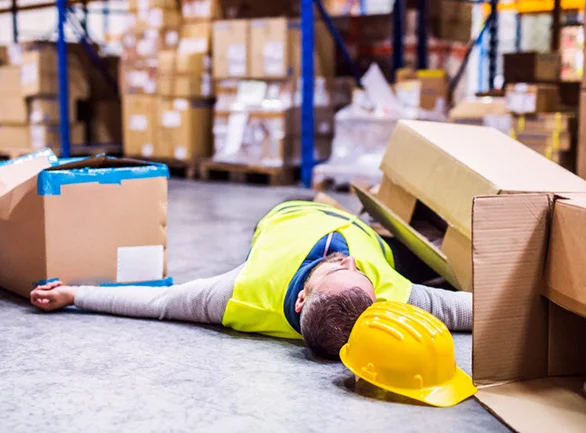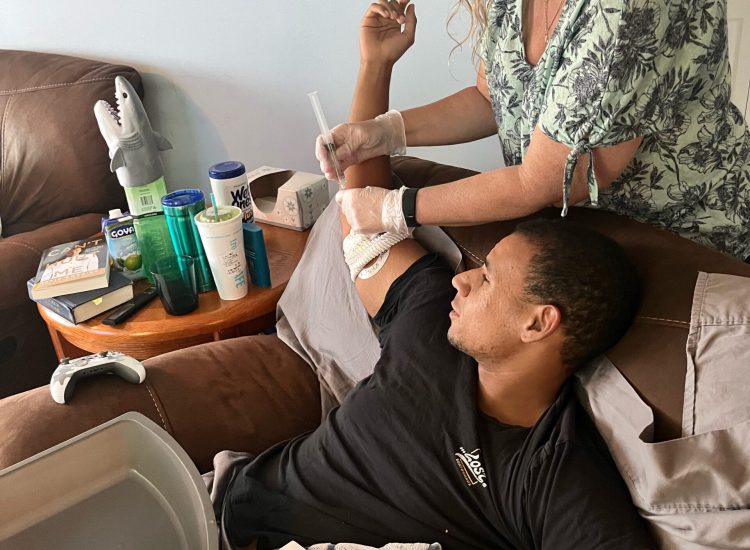Construction work is one of the most dangerous industries in the United States. According to OSHA, one in ten construction workers is injured every year. This highlights the importance of having knowledgeable construction injury lawyers to ensure justice and fair compensation for injured workers. This comprehensive guide will cover everything from understanding construction injuries to navigating the legal process for filing claims.
Toc
- 1. Understanding Construction Work Injuries
- 2. How a Construction Injury Lawyer Can Help You
- 2.1. Steps to Take After a Construction Injury
- 2.2. Filing a Claim for Construction Injuries
- 2.3. Role of a Construction Injury Lawyer in the Legal Process
- 2.4. Benefits of Hiring a Specialized Lawyer for Construction Accidents
- 2.5. Navigating Workers’ Compensation for Construction Injuries
- 2.6. Overview of Workers’ Compensation for Construction Workers
- 2.7. Challenges in Receiving Fair Compensation for Construction Injuries
- 2.8. How a Lawyer Can Assist in Workers’ Compensation Claims
- 2.9. Workers’ Compensation vs. Personal Injury Lawsuits
- 3. Pursuing Third-Party Liability in Construction Accidents
- 4. The Legal Process for Construction Injury Claims
- 5. Conclusion
Understanding Construction Work Injuries

Construction work is physically demanding and exposes workers to numerous hazards, making it one of the most dangerous industries in the United States. According to the Bureau of Labor Statistics, there were 1,008 fatal injuries in construction in 2019 alone. The most common causes of injury include falls, being struck by objects, electrocution, and caught-in/between incidents.
It’s essential for construction workers and employers to understand these risks and take necessary precautions to prevent accidents and injuries on worksites.
Common Types of Construction Injuries
Construction sites are fraught with hazards, leading to a variety of injuries:
- Falls: The most common type of injury, often resulting from scaffolding collapses or unprotected edges.
- Electrocution: Contact with live wires and electrical equipment can result in severe burns or fatal accidents.
- Struck by Objects: Falling tools or construction materials can cause significant injuries, including head trauma and fractures.
Factors Contributing to Work-Related Accidents
Understanding the causes of these injuries is crucial for prevention and legal action:
- Human Error: Fatigue, lack of proper training, or negligence can lead to accidents.
- Equipment Failure: Malfunctioning or poorly maintained equipment poses serious risks.
- Lack of Safety Protocols: Inadequate safety measures and oversight can create hazardous working conditions.
The Role of Construction Injury Lawyers
In the event of a construction work injury, it’s essential to seek legal representation to protect your rights and secure compensation for losses. Here’s how a construction injury lawyer can help:
- Legal Expertise: Lawyers specializing in construction injuries have a thorough understanding of state and federal regulations, helping you navigate complex legal processes.
- Investigation and Evidence Gathering: Experienced lawyers will investigate the cause of the accident, gather evidence, and build a strong case on your behalf.
- Negotiation with Insurance Companies: Construction injury lawyers are skilled negotiators who can help you receive fair compensation from insurance companies.
- Litigation Representation: If necessary, they can represent you in court to fight for your rights and ensure maximum compensation.
Importance of Seeking Legal Counsel for Construction Injuries
Legal representation is vital for several reasons:
- Protecting Workers’ Rights: Lawyers ensure that injured workers are treated fairly and receive the benefits they deserve.
- Securing Fair Compensation: Legal experts can accurately assess the extent of injuries and the compensation required.
- Navigating Legal Complexities: Construction injury laws are intricate, and specialized lawyers can effectively guide clients through the process.
How a Construction Injury Lawyer Can Help You
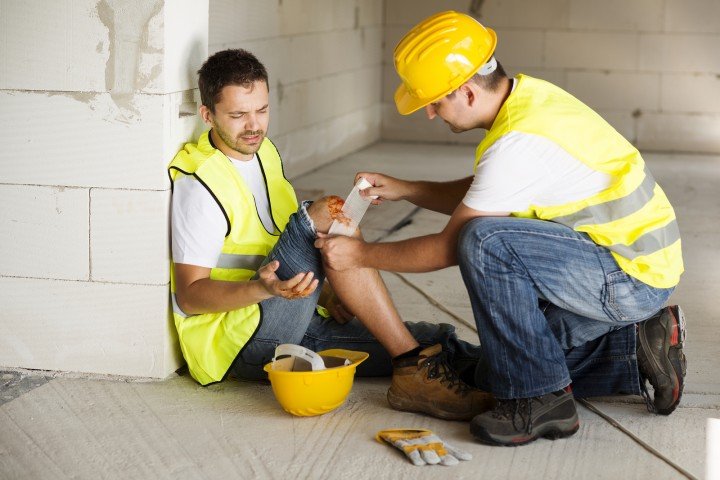
Construction injury lawyers offer a range of services to help you receive the compensation and justice you deserve:nd Representing in Court: If necessary, construction injury lawyers can file lawsuits
Steps to Take After a Construction Injury
Immediate actions can significantly impact the outcome of a claim:
- Reporting the Injury: Notify your employer immediately to document the incident. This step is crucial not only for creating a formal record but also for ensuring that your rights are protected under workplace safety regulations.
- Seeking Medical Attention: Obtain a thorough medical evaluation to assess and treat injuries. This is important not only for your health but also for creating medical records that will support your claim.
- Consulting a Lawyer: Early legal consultation can set the stage for a successful claim. A lawyer can guide you through the initial steps, helping to preserve evidence and advising you on the best course of action.
Filing a Claim for Construction Injuries
The legal process for filing claims can be complex and time-consuming. Here are the essential steps:
- Reporting the Injury: Inform your employer of the injury and fill out necessary forms. This step initiates the formal process and is often required within a specific time frame to be valid.
- Investigation: Your lawyer will investigate the accident, gather evidence, and assess damages. This can involve reviewing safety records, interviewing witnesses, and consulting with experts to build a strong case.
- Negotiation: Your lawyer will negotiate with the insurance company to obtain a fair settlement. This phase often involves back-and-forth discussions to ensure that all your medical expenses, lost wages, and other damages are adequately covered.
- Litigation: If negotiations fail, your lawyer will file a lawsuit and represent you in court. This step can be lengthy and requires a detailed understanding of legal procedures and evidence presentation.
Role of a Construction Injury Lawyer in the Legal Process
Lawyers play a pivotal role from start to finish:
- Investigation: Gathering evidence, interviewing witnesses, and reviewing safety records. Their expertise ensures that no stone is left unturned in building your case.
- Negotiation: Dealing with insurance companies to secure a fair settlement. Lawyers use their experience to counter low offers and push for compensation that truly reflects your losses.
- Litigation: Representing clients in court if a reasonable settlement cannot be reached. Lawyers prepare for trial by organizing evidence, preparing witnesses, and formulating compelling arguments.
Benefits of Hiring a Specialized Lawyer for Construction Accidents
Specialized knowledge and experience are invaluable:
- In-Depth Knowledge of Construction Laws: Expertise in regulations and safety standards. Specialized lawyers understand the nuances of construction law and how to leverage it in your favor.
- Experience with Similar Cases: Familiarity with common tactics used by employers and insurers. Their past experiences with similar cases allow them to anticipate and counteract common defense strategies.
- Higher Success Rates: Specialized lawyers often achieve better outcomes for their clients. Their focused expertise translates into a higher likelihood of securing favorable settlements or verdicts.
Workers’ compensation is a form of insurance that provides medical benefits, lost wages, and other expenses for employees injured on the job. Here’s what you need to know:
Overview of Workers’ Compensation for Construction Workers
Workers’ compensation is designed to provide relief but has its complexities:
- Coverage: Medical expenses, rehabilitation costs, and lost wages. Coverage can also extend to long-term disability benefits if the injury results in permanent impairment.
- Eligibility: Criteria workers must meet to qualify for benefits. This can include being classified as an employee (not an independent contractor) and proving that the injury occurred within the scope of employment.
- Claims Process: Steps involved in filing and managing a workers’ compensation claim. This process includes submitting detailed medical reports, adhering to deadlines, and sometimes attending hearings.
Challenges in Receiving Fair Compensation for Construction Injuries
Several hurdles can impede compensation:
- Denials: Claims can be denied on technicalities or insufficient evidence. It’s common for initial claims to be denied, requiring a robust appeals process.
- Delays: Bureaucratic slowdowns can delay much-needed financial support. Administrative processes can be slow, leaving injured workers without timely assistance.
- Low Settlement Offers: Insurers may propose settlements that do not fully cover the extent of injuries. It’s often necessary to negotiate or litigate to secure a fair amount.
How a Lawyer Can Assist in Workers’ Compensation Claims
Legal aid can make a significant difference:
- Ensuring All Eligible Benefits: Lawyers ensure no benefit is overlooked. They understand the full range of compensations available and work to secure them all.
- Appealing Denials: Expert advice on how to handle denied claims. Lawyers can guide you through the appeals process, making a compelling case for reversing the denial.
- Negotiating Settlements: Ensuring the settlement reflects the true impact of the injury. Lawyers leverage their negotiation skills and knowledge of similar cases to push for fair compensation.
Workers’ Compensation vs. Personal Injury Lawsuits
Workers’ compensation is often the only legal recourse for construction workers:
- No Fault Requirement: Workers’ compensation does not require negligence, while personal injury lawsuits do. This means you can receive benefits even if the injury was not the result of employer negligence.
- Limits to Damages: Workers’ compensation provides limited damages, while personal injury lawsuits can include non-economic damages like pain and suffering. Personal injury claims can also result in punitive damages in cases of gross negligence.
- Process Differences: Workers’ compensation claims have a different process than personal injury lawsuits. Workers’ compensation involves administrative hearings and procedures, whereas personal injury lawsuits are handled through the court system and may involve a jury trial.
Pursuing Third-Party Liability in Construction Accidents
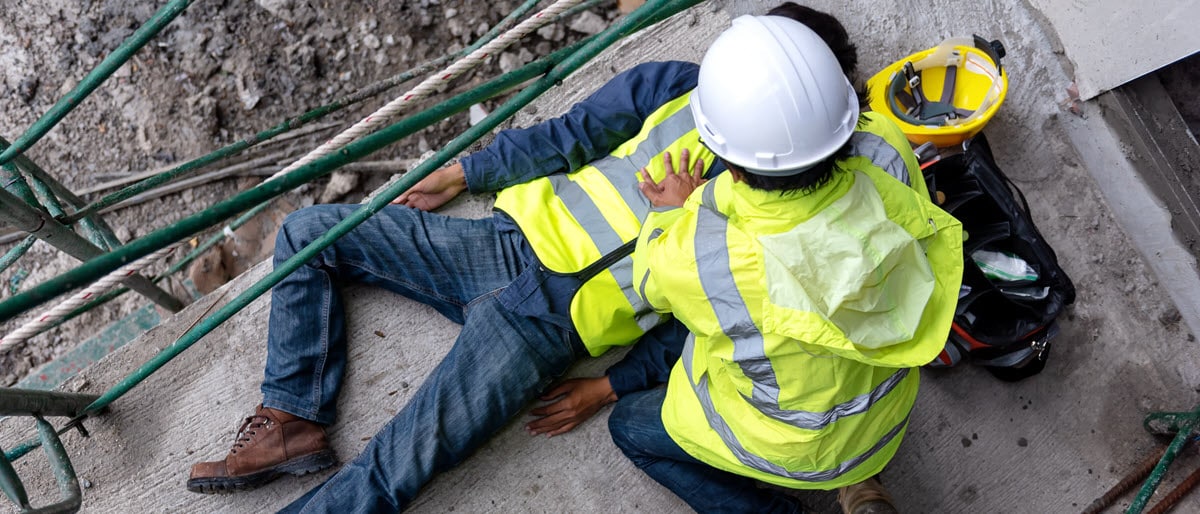
Third-party liability refers to the responsibility of parties other than an employer for an injury. This scenario may give you access to additional compensation:
What is Third-Party Liability in Construction Injury Cases?
Understanding this legal avenue can open up additional compensation routes for injured workers, allowing them to seek justice from multiple angles:
- Definition: Third-party liability refers to holding non-employer parties responsible for negligence or actions that led to injuries. It extends beyond the immediate employer to include any external entity that may have contributed to the unsafe conditions.
- Scope: This can include manufacturers of defective equipment, subcontractors who fail to adhere to safety protocols, or property owners neglecting maintenance. Essentially, any entity whose actions or inactions contributed to the hazardous environment can be held liable.
- Advantages: Pursuing third-party claims can result in greater compensation compared to relying solely on workers’ compensation. This may cover additional damages such as pain and suffering and loss of earning capacity that workers’ compensation might not fully address.
Identifying Liable Third Parties for Construction Accidents
Identifying responsible entities involves a meticulous and thorough investigation, which can be complex but is crucial for a successful claim:
- Manufacturers: Faulty equipment, malfunctioning tools, or inadequate safety gear can implicate manufacturers in the injury. Detailed investigation into the product’s history, design flaws, and previous incidents can provide necessary evidence.
- Subcontractors: Workers from other companies or subcontracted entities who neglect safety measures or engage in reckless behavior may be held liable. Establishing the connection between their actions and the injury is key.
- Property Owners: Property owners who fail to ensure the premises are safe for construction activities can be held accountable. This includes responsibilities such as maintaining clear pathways, ensuring proper signage, and adhering to building codes.
Legal Strategies for Pursuing Third-Party Claims
Effective strategies, combined with experienced legal counsel, can significantly improve the chances of a successful claim:
- Investigation: A comprehensive and detailed gathering of evidence is essential. This includes collecting accident reports, safety logs, and maintenance records to build a robust case.
- Gathering Evidence: Photographs of the accident scene, witness statements, and expert testimonies can substantiate claims. These pieces of evidence need to be meticulously documented and preserved.
- Negotiating with Insurance Companies: Skilled negotiation is crucial for securing favorable settlements. Lawyers with expertise in third-party claims can navigate the complexities of insurance policies and advocate fiercely on behalf of the injured worker.
The Legal Process for Construction Injury Claims
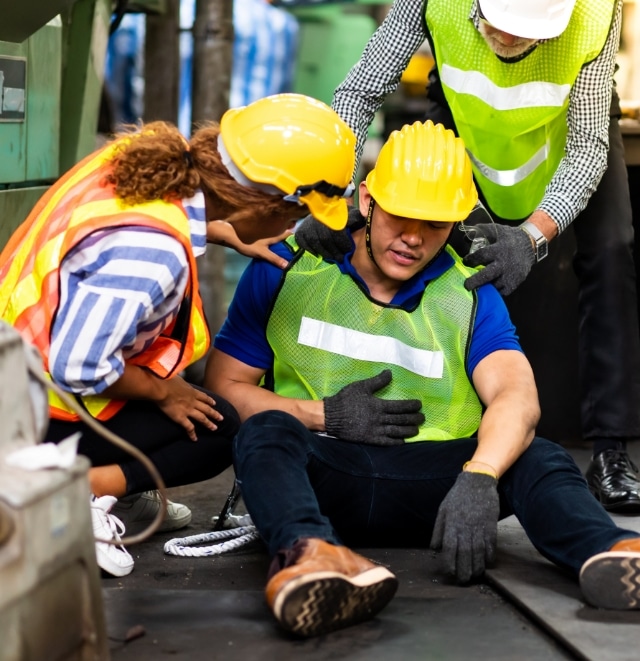
Navigating the legal process can be daunting, but understanding each step can provide clarity and assurance to those pursuing claims:
Steps Involved in Filing a Construction Injury Claim
Understanding the procedural steps can demystify the legal process and prepare clients for what lies ahead:
- Initial Consultation: The first step involves evaluating the case with a legal professional to determine the best course of action. This includes discussing the incident, reviewing medical records, and assessing potential claims.
- Investigation: Collecting evidence is a critical phase. This involves site inspections, interviewing witnesses, and collaborating with experts to build a solid case.
- Demand Letter: A formal request for compensation is sent to the liable parties, detailing the nature of the claim, injuries sustained, and the compensation sought.
Timeline for Resolving Construction Injury Cases
Several factors can influence the duration of a case, and understanding these can help manage expectations:
- Complexity of the Case: More severe injuries often require longer and more detailed investigations. Complex cases with multiple liable parties can extend the timeline.
- Willingness to Settle: Cases tend to resolve faster if all parties are willing to negotiate and settle early. Protracted negotiations or court battles can significantly lengthen the process.
- Court Schedules: Court availability and scheduling can impact the timeline. Delays in court dates and hearings can prolong the resolution of the case.
What to Expect During the Legal Process with a Construction Injury
Knowing what lies ahead can better prepare clients for the journey:
- Communication: Regular updates from the lawyer help keep clients informed about the progress and any new developments in their case. Consistent communication is key for transparency and trust.
- Hearings and Depositions: Clients may need to participate in legal proceedings as required, including depositions, hearings, and possibly trial appearances. These steps are integral to building a strong case.
- Settlement or Trial Outcome: The final resolution will come through either a negotiated settlement or a court judgment. Understanding both potential outcomes can help clients prepare for various scenarios and make informed decisions.
Conclusion
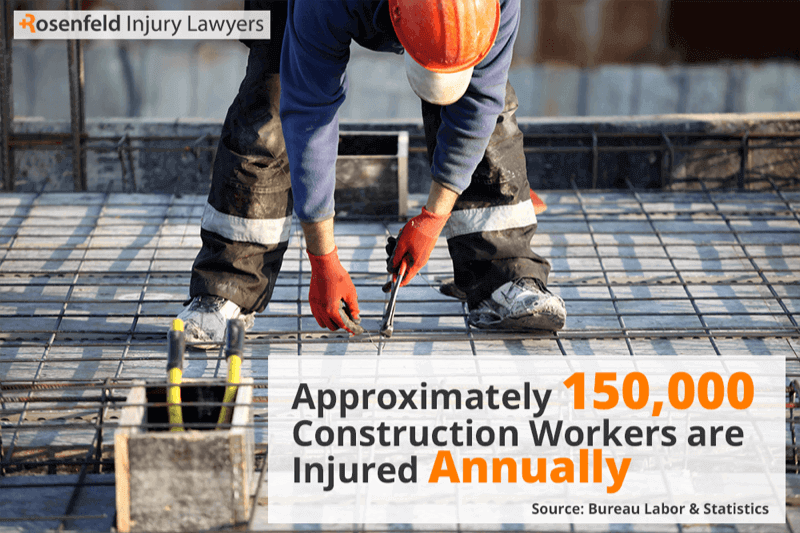
Navigating the complexities of construction injury claims requires expertise and dedication. By understanding the nuances of these cases, injured workers can secure the justice and compensation they deserve. If you or someone you know has been injured in a construction accident, consulting a specialized construction injury lawyer can make all the difference. Don’t delay—reach out to an expert today and take the first step toward ensuring your rights are protected and your future secured.

